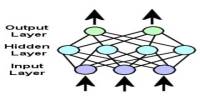Children from low-income families are more likely to have cognitive and behavioral issues than their more affluent peers. A great deal of previous research has looked into the physical effects of childhood poverty, as well as the disparities in mental health between socioeconomic classes. However, Deanna Barch, chair and professor in the Department of Psychological & Brain Sciences in the Arts & Sciences at Washington University in St. Louis, and her colleague Joan Luby, MD, the Samuel and Mae S. Ludwig Professor of Child Psychiatry in the School of Medicine, wanted to look at a range of outcomes to see if poverty persists into adulthood.
And, if so, how so? To answer these questions, Luby and Barch, who is also a radiology professor? and the Gregory B. Couch Professor of Psychiatry in the School of Medicine, and colleagues collected data from families who agreed to participate for 17 years, including 216 preschoolers followed through early adulthood. During the course of the study, the young participants underwent brain imaging to help tease out the relationships between their socioeconomic status in preschool and provided information on a variety of outcomes in early adulthood, including cognitive, social, and psychiatric.
The results were published in the journal Biological Psychiatry: Cognitive Neuroscience and Neuroimaging.
New research shows a lasting relationship between childhood poverty, brain development. A 17-year study of children associates poverty with smaller, slower-growing subcortical regions
“First and foremost, yes,” said Barch, “early poverty continues to predict worse outcomes in all of these domains.” Even if a child’s socioeconomic status changes before reaching adulthood, this remains true.
According to the findings, the risks for these outcomes are mediated by brain development. “We believe that poverty and all of the things associated with it” – such as stress, poor nutrition, and limited access to health care – “have an impact on brain development,” she said. “If we can prevent poverty, we can help avoid some of these negative consequences.”
The researchers recruited primary caregivers and their 3- to 5-year-old children for the study. They used a specific recruiting questionnaire to ensure that there were more children with elevated depression symptoms. This would later enable researchers to distinguish the effects of poverty from pre-existing psychological disorders.
The children were interviewed on an annual basis, and when they reached the age of 16, they were tested for cognitive function, psychiatric disorders, high-risk behaviors, educational function, and social function. Throughout the 17-year period, the participants also received five brain scans that measured the volumes of local and global brain matter, providing the researchers with a unique insight into whether brain development was a mediating factor – are changes to the brain the way that poverty “gets into” someone?
After controlling for variables such as preschool psychopathology and any significant life events over the years, the researchers discovered that socioeconomic status in preschool was linked to cognitive function, high-risk behaviors, social function, and educational function. 13 years after the children who were enrolled in the study at the time.

The results of a brain scan revealed the physical signs of poverty. As preschoolers, children who lived in poverty had smaller volumes of certain subcortical brain regions such as the hippocampus, caudate, putamen, and thalamus. “But they also had less growth in these regions over time,” said Barch. “As a result, they start out smaller and don’t grow as quickly.”
Subcortical regions aren’t a popular research topic because they aren’t always associated with a specific cognitive or emotional function. Instead, information must pass through them to reach brain regions associated with higher-order functioning.
“For example, the thalamus doesn’t always get a lot of love in the literature,” Barch explained, “but it’s a very important relay structure that helps coordinate the transfer of information from the brainstem to higher-order cortical areas.”
“These brain regions are like important waypoints on the brain’s highway,” Barch explained. Furthermore, they are especially sensitive to environmental factors such as pollutants or poor nutrition, which are more likely to affect those living in poverty.
To be clear, this data does not paint a picture of determinism. “Despite growing up in poverty, many children have wonderful outcomes,” Barch said. This is frequently because they have received additional assistance and resources. This theory will be tested in upcoming research in which she and her colleagues will track the effects of the child tax credit on children’s development.
“Growing up in poverty makes things more difficult for people, but it is preventable,” said Barch. “The good news is that we can do something about it.” In some ways, the children – now adults – have aided in the search for answers simply by participating year after year. They appeared during adolescence, their adolescent years, and even when some of them became young parents themselves. “It’s pretty amazing,” said Barch. “They have made significant contributions to science.”
















